Energy Storage Program
Transforming New York’s Electricity System for a Clean Energy Future
Energy storage has a pivotal role in delivering reliable and affordable power to New Yorkers as we increasingly switch to renewable energy sources and electrify our buildings and transportation systems. Integrating storage in the electric grid, especially in areas with high energy demand, will allow clean energy to be available when and where it is most needed.
As New York continues to invest and build a cleaner grid, energy storage will allow us to use existing resources more efficiently and phase out the dirtiest power plants. This transition will help New York meet its greenhouse gas emission reduction goals, improve public health, and mitigate the future impacts of climate change.
Types of Storage
- Residential storage: Primarily used for home resiliency to deliver back-up power, these systems can also shift energy consumption to off-peak hours and integrate home solar for a low-cost clean energy supply. Residential storage systems can be eligible for Inflation Reduction Act tax credits.
- Commercial storage: Businesses can install storage systems onsite or separate from building loads, like a community solar project. These systems can be paired with solar, provide back-up power, and earn compensation from utilities for delivering grid benefits.
- Bulk storage: These grid-connected storage projects enable increased integration of renewable energy sources while ensuring a resilient and reliable power supply when and where it’s needed most.
Learn More About Energy Storage
-
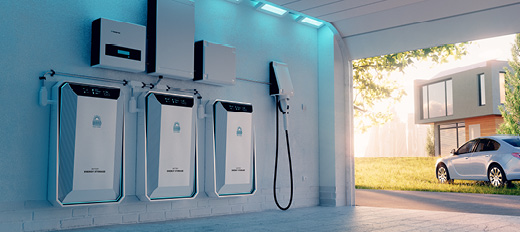
Residents
Read More ResidentsLearn about the benefits of pairing solar and energy storage and incentives available for installing a system at your home.
-
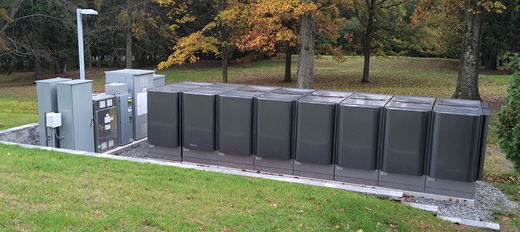
Businesses
Read More BusinessesExplore incentives and technical resources for installing energy storage for your business.
-

Developers & Contractors
Read More Developers & ContractorsView opportunities to access incentives, technical assistance, and financing for energy storage projects.
-
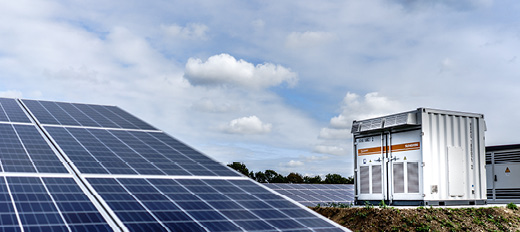
Local Government
Read More Local GovernmentAccess informational resources and technical assistance to help communities make informed decisions when managing local energy storage development.
-
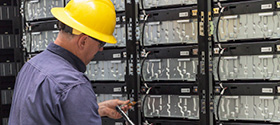
Inter-Agency Fire Safety Working Group
Read More Inter-Agency Fire Safety Working GroupLearn how NYS is working with partner agencies to ensure the safety and security of energy storage systems across the state.
-

Researchers
Read More ResearchersExplore market-leading resources to help researchers developing energy storage technologies and next-generation solutions.
-
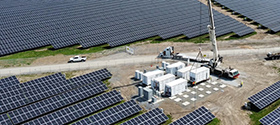
Storage Data Maps
Read More Storage Data MapsLearn more about installed energy storage projects and New York State's progress toward its energy storage goals.
Energy Storage is Powering New York’s Clean Energy Transition
In 2019, New York passed the nation-leading Climate Leadership and Community Protection Act (Climate Act), which codified some of the most aggressive energy and climate goals in the country, including 1,500 MW of energy storage by 2025 and 3,000 MW by 2030. In June 2024, New York’s Public Service Commission expanded the goal to 6,000 MW by 2030.
Storage will increase the resilience and efficiency of New York’s grid, which will be powered by 70% renewable energy by 2030, and 100% carbon-free electricity by 2040. Additionally, energy storage can stabilize supply during peak electric usage and help keep critical systems online during an outage.
All of this while creating an industry that could employ at least 30,000 New Yorkers by 2030.
Energy Storage Safety
Energy storage technologies and systems are regulated at the federal, state, and local levels, and must undergo rigorous safety testing to be authorized for installation in New York. You can download NYSERDA’s New York State [PDF] and New York City [PDF] factsheets to learn more about energy storage regulations and safety in your community.
On July 28, 2023, Governor Kathy Hochul announced the creation of a new Inter-Agency Fire Safety Working Group to ensure the safety and security of energy storage systems across the state. Updates and resources can be found on the Working Group’s webpage. On December 21, 2023, Governor Kathy Hochul released initial findings from the Inter-Agency Fire Safety Working Group, which was convened following fires at battery energy storage systems at facilities in Jefferson, Orange and Suffolk Counties this summer.
An Expanded Goal of 6 Gigawatts by 2030
On June 20, 2024, the New York Public Service Commission approved the Order Establishing Updated Energy Storage Goal and Deployment Policy [PDF]. This Order formally expands the State’s goal to 6,000 Megawatts of energy storage to be installed by 2030, and authorized funds for NYSERDA to support 200 Megawatts of new residential-scale solar, 1,500 Megawatts of new commercial and community-scale energy storage, and 3,000 Megawatts of new large-scale storage. These projects will reduce projected future statewide electric system costs by nearly $2 billion, in addition to improved public health from reduced exposure to harmful fossil fuel pollutants.
The Order specifies that at least 35% of the benefits of these new energy storage projects will accrue to disadvantaged communities, in accordance with the Climate Act.
The Order builds on the recommendations from the New Yorks 6 GW Energy Storage Roadmap [PDF] that was filed in December 2022 by NYSERDA and the New York State Department of Public Service (DPS). The Roadmap proposed a comprehensive set of recommendations to expand New York’s energy storage programs to cost-effectively unlock the rapid growth of renewable energy across the State and bolster grid reliability and customer resilience. The 2024 Energy Storage Order Overview [PDF] includes high-level details on energy storage project funding and requirements, plus a timeline for next steps.
Sign Up For News
Stay up to date on energy storage programs and policy in New York State, best practices, and more.
Stay Connected